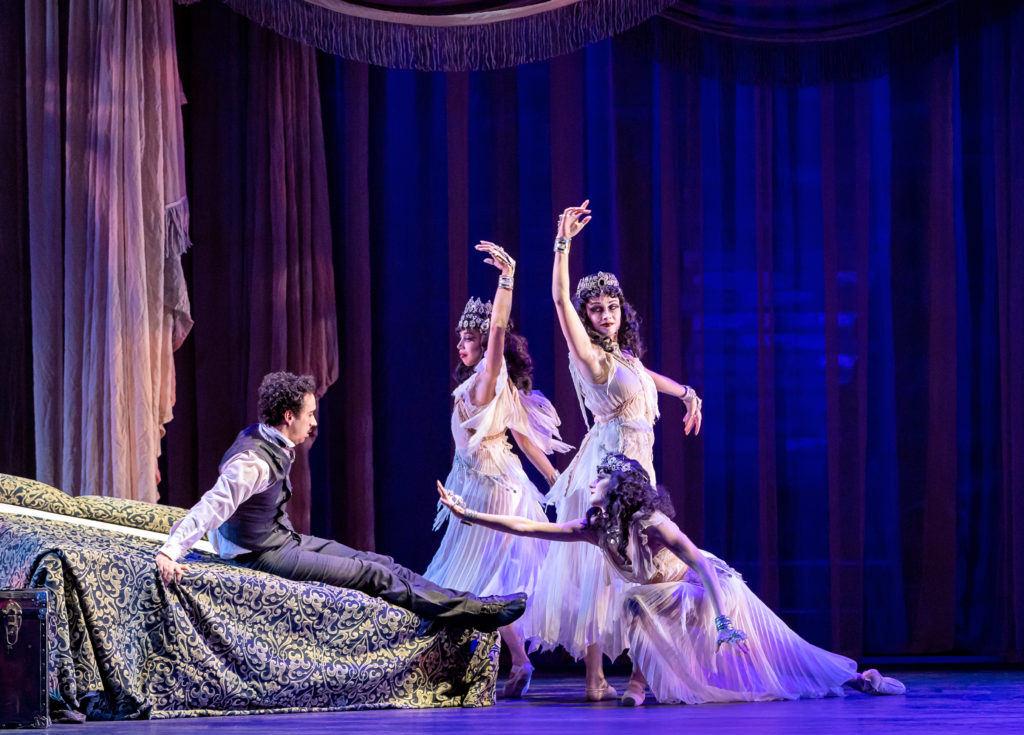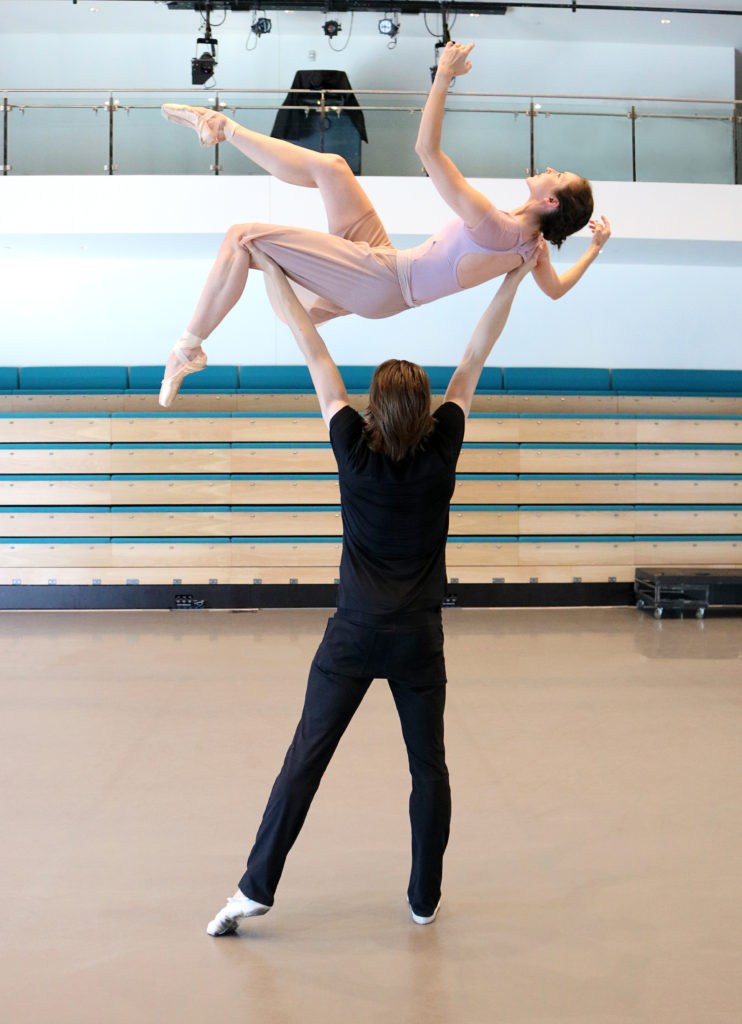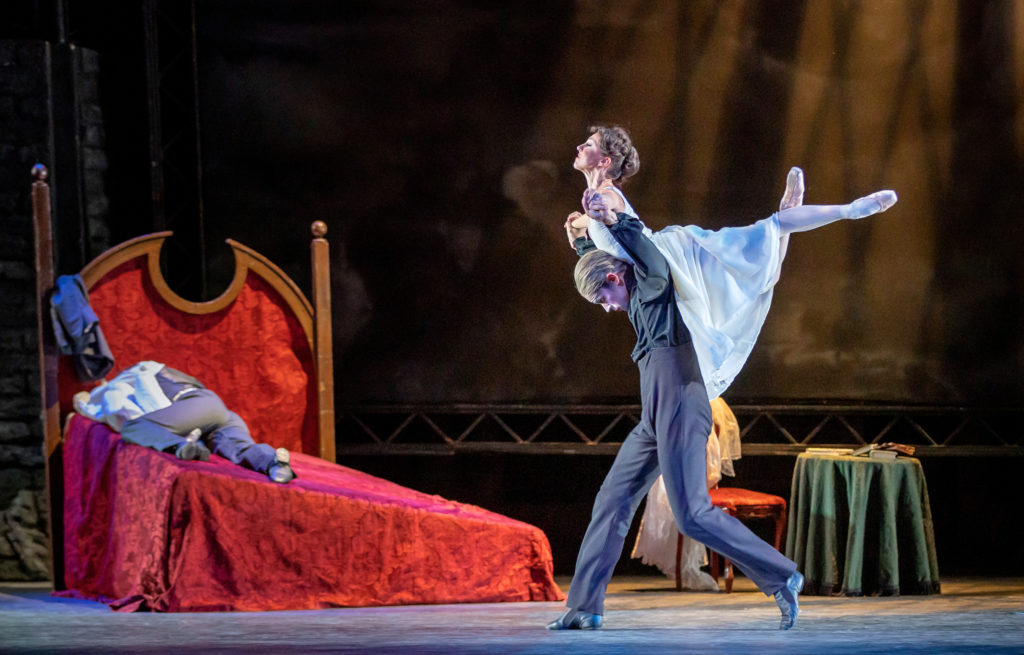Steven McMahon Interviewed for Pointe Magazine
Ahead of World Premiere of Ballet Memphis's "Dracula"
Artistic Director Steven McMahon was recently interviewed by Pointe contributor April Deocariza about his new ballet Dracula. Read along below for the full feature.
“I had always been interested in why the character of Dracula continues to endure in our culture,” says McMahon, excited to take his own spin on the tale. “The way [Bram Stoker’s] novel is written allows for a lot of creativity.”
Ballet is no stranger to the supernatural. Whether it’s the wilis of Giselle or the sylphs in La Sylphide, ballet productions have dabbled in the world of spirits for centuries.
Now, ballet companies are leveraging the excitement of Halloween to drive today’s theatergoers. Pointe spoke with three artistic directors about the productions they planned for this month, the popularity of scary stories, and the future the industry might have around Halloween-timed ballets.
Bringing Spooky Classics to Life
During her tenure as Dayton Ballet’s artistic director, Karen Russo Burke has programmed three performances around Halloween, including Dracula Bloodlines and a mixed-repertory program that featured Russo Burke’s Día de los Muertos; Chasing Ghosts, by Amy Seiwert; and Ghost Light, by Penny Saunders. This year, she has choreographed a new ballet, The Legend of Sleepy Hollow, based on the 1819 gothic short story by Washington Irving.
 ARTISTS OF DAYTON BALLET IN DRACULA BLOODLINES. PHOTO BY SCOTT ROBBINS: GEEK WITH A LENS.
ARTISTS OF DAYTON BALLET IN DRACULA BLOODLINES. PHOTO BY SCOTT ROBBINS: GEEK WITH A LENS.
Dayton Ballet has seen an uptick in ticket sales around Halloween-timed performances in the past. Russo Burke thinks part of the draw of productions centered on popular tales, especially during Halloween, is that audiences are familiar with them. “People may stay away from ballet because they might not know certain choreographers or names of pieces and music, so sometimes a story they relate to can get them in the door.”
Leveraging Halloween also makes attending the ballet “more of an event,” says Russo Burke, explaining that audience members enjoy dressing up in costume.
That is also the case for Michael Pink’s Dracula, a popular version that has been staged by numerous companies, and Colorado Ballet’s 2022–23 season opener. The company first performed the production in 2001.
 ARTISTS OF COLORADO BALLET IN MICHAEL PINK’S DRACULA. PHOTO BY MIKE WATSON.
ARTISTS OF COLORADO BALLET IN MICHAEL PINK’S DRACULA. PHOTO BY MIKE WATSON.
“Dracula is a name that everybody knows,” says Gil Boggs, Colorado Ballet artistic director. “It’s a bit of a cult; we get a lot of phone calls in ticketing about when we’re doing Dracula again. And the work is very suspenseful. It’s not your typical classical ballet. Audience members love dressing up for it—we have vampires and people in capes coming to the performance.”
Steven McMahon, Ballet Memphis artistic director, has created four narrative ballets in the past and wanted to go for a spookier story this time around. The world premiere of McMahon’s Dracula will take place on October 28.
“I had always been interested in why the character of Dracula continues to endure in our culture,” says McMahon, excited to take his own spin on the tale. “The way [Bram Stoker’s] novel is written allows for a lot of creativity.”
 BRANDON RAMEY AND VIRGINIA PILGRIM RAMEY REHEARSE STEVEN MCMAHON’S DRACULA. PHOTO BY REBECCA THOMASON, COURTESY BALLET MEMPHIS.
BRANDON RAMEY AND VIRGINIA PILGRIM RAMEY REHEARSE STEVEN MCMAHON’S DRACULA. PHOTO BY REBECCA THOMASON, COURTESY BALLET MEMPHIS.
Like Dayton Ballet and Colorado Ballet, Ballet Memphis is building excitement through social media by encouraging attendees to dress up in costume for the show. The performance will take place in a popular venue in downtown Memphis, the Orpheum Theatre, which is reportedly haunted, adding to the overall experience for audiences.
Excitement That Endures?
As ballets like Dracula drive audiences to the ticket counters (Colorado Ballet nearly sold out all eight of its performances this month, leading Boggs to add a ninth show), could capitalizing on the consumer popularity of Halloween help the industry recover from the challenges of the ongoing COVID-19 pandemic?
“I don’t want to pigeonhole dance companies to have to always program to the holiday, but I think that in this post-COVID world, we have to look at things a little bit differently,” says Russo Burke. “We can get people back in the theaters and show that it’s safe, it’s fun and it’s accessible.”
She also adds that Halloween-timed productions can open the door for new audience members to consider attending other performances.
“Once we have gotten people in and they see the athleticism and artistry of the dancers, they often come back to see them again in a repertory show,” says Russo Burke.
 DANA BENTON, MARIO LABRADOR AND JONNATHAN RAMIREZ IN MICHAEL PINK’S DRACULA. PHOTO BY MIKE WATSON.
DANA BENTON, MARIO LABRADOR AND JONNATHAN RAMIREZ IN MICHAEL PINK’S DRACULA. PHOTO BY MIKE WATSON.
But there are some challenges, particularly when it comes to fitting in other ballets during a company’s short and busy season.
“We do five productions each season, so I don’t have the bandwidth to do Dracula every year. Though the thought did go through my mind,” says Boggs.
McMahon agrees.“It can be limiting,” he says. “We only do four main programs a season: a fall production, The Nutcracker, winter and spring. I don’t see us doing [a Halloween production] every year right now, but never say never—there are lots of spooky stories out there.”
Below, check out a list of companies who’ve participated in the Halloween fun:
Dracula
- Colorado Ballet: October 7–16
- Columbia City Ballet: October 28-29
- Carolina Ballet: October 13–30
- Ballet Arkansas: October 20–23
- Fort Wayne Ballet: October 20–22
- Orlando Ballet: October 20–23
- Roxey Ballet: October 21–30
- Ballet Memphis: October 28-30
- BalletMet: October 28–November 5
- Roanoke Ballet Theatre: October 29
- Pittsburgh Ballet Theatre: February 10–12, 2023
- Ballet Fantastique: October 20–23
- Dayton Ballet: October 28–30
The Legend of Sleepy Hollow
- Ballet Fantastique: October 20–23
- Dayton Ballet: October 28–30
Penny’s Dreadful
- Wonderbound: October 20–30



